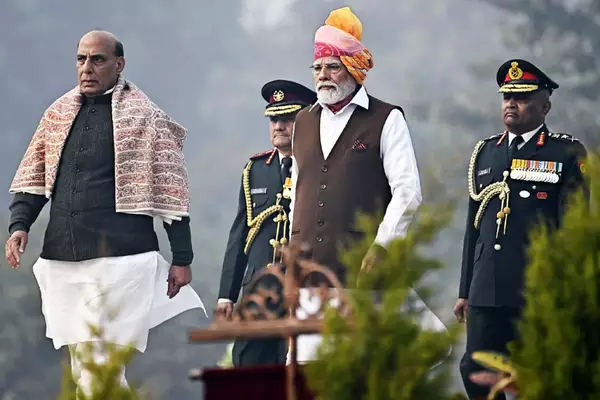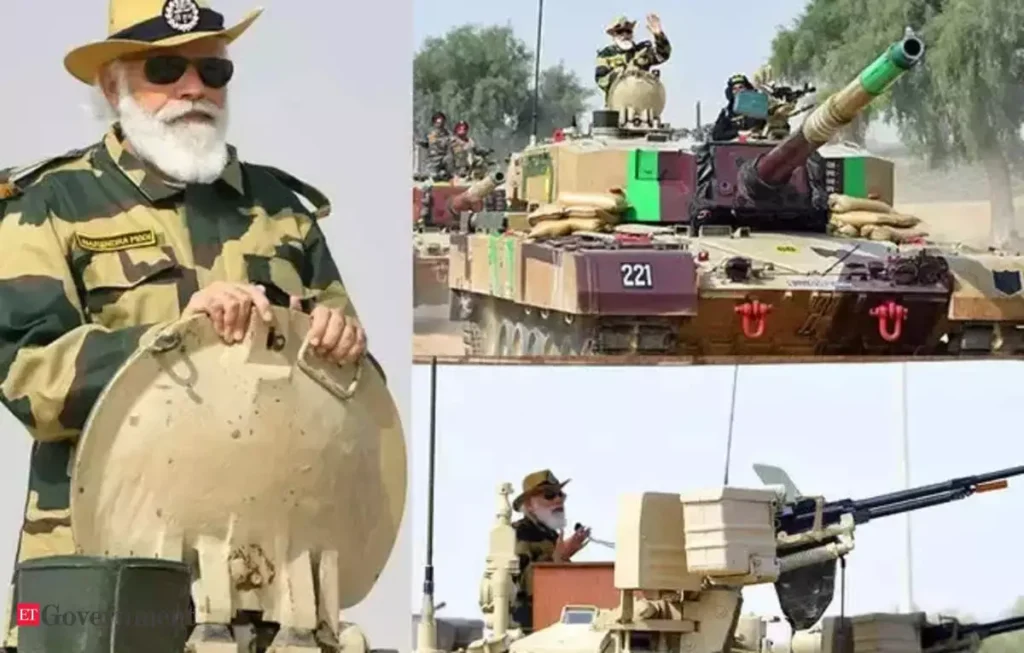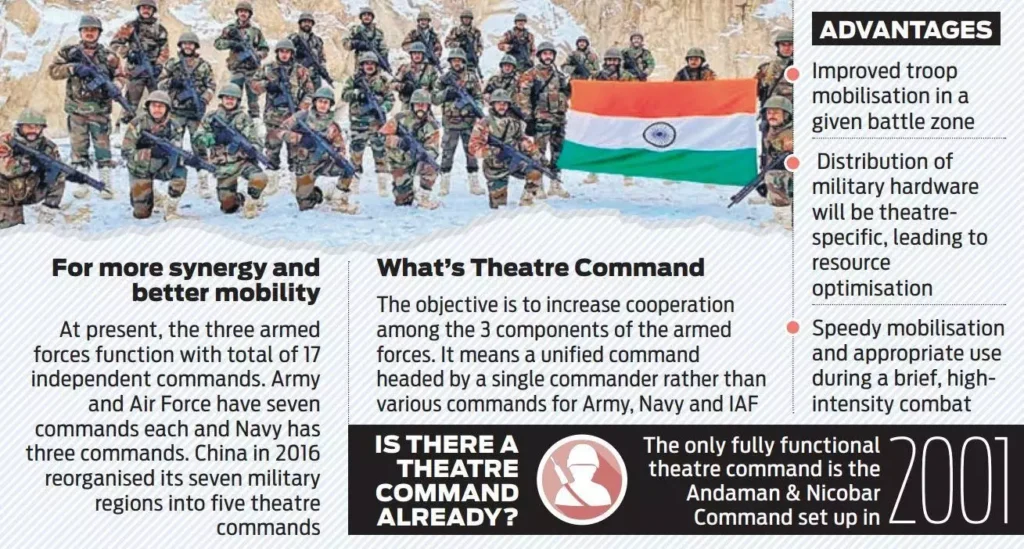The Ministry of Defence highlighted the creation of Integrated Theatre Commands (ITCs) as essential for better coordination among the services.
- The Minister emphasized the need to evolve a joint military vision that enhances the integration and synergy among the Army, Navy, and Air Force.
About Integrated Theatre Commands (ITCs):
- ITCs aim to integrate the Indian Army, Navy, and Air Force to work cohesively in specific theatres based on adversarial threats, with clear military goals during conflicts or wars.
- The concept was recommended by both the Kargil Review Committee and the D B Shekatkar Committee.
- Proposed Theatre Commands:
- Northern Theatre Command (China-centric) – Headquarters in Lucknow.
- Western Theatre Command (Pakistan-centric) – Headquarters in Jaipur.
- Maritime Theatre Command (focused on the Indian Ocean) – Headquarters proposed in Thiruvananthapuram, Karwar, or Coimbatore.
- Currently, India has 17 single-service commands: Army and Air Force with 7 each, and the Navy with 3.
Significance of ITCs:
- Synergy of Forces: ITCs will enable the Army, Navy, and Air Force to operate under one operational command, ensuring better coordination and resource utilization.
- Efficiency: It separates operational functions from administrative ones, streamlining operations.
- Preparedness for Future Warfare: ITCs will adapt to modern warfare needs and enable effect-based operations.
Challenges of ITCs
- There is a lack of a national security doctrine promoting jointness among the three services.
- The absence of a common command structure remains a challenge to effective integration.
Global Practices and India:
- Major countries like the USA, China, and France have already implemented theatre command structures.
- India’s ITCs will have a unique structure tailored to its specific security challenges and will not directly follow global military orders.
Proposed Leadership and Command Structures
- The Chief of Defence Staff (CDS) will oversee the ITCs, supported by the Department of Military Affairs (DMA).
- Each theatre command will be headed by a General or equivalent officer who will report to a National Defence Committee led by the Defence Minister.
- A Vice Chief of Defence Staff (Vice CDS) will manage strategic planning and procurement, while a Deputy Chief of Defence Staff (Deputy CDS) will handle operations and intelligence.
Logistics and Resource Optimization
- Mumbai is proposed as the first common defence station for all three services.
- Joint logistics nodes are being set up to streamline the supply chain and officer postings across the services.
Ref: Source
| UPSC IAS Preparation Resources | |
| Current Affairs Analysis | Topperspedia |
| GS Shots | Simply Explained |
| Daily Flash Cards | Daily Quiz |
Frequently Asked Question:
What are Integrated Theatre Commands (ITCs)?
ITCs integrate the Army, Navy, and Air Force for cohesive operations in specific theatres, based on strategic adversarial threats.
Which committees recommended the formation of ITCs?
The Kargil Review Committee and the D B Shekatkar Committee recommended the establishment of Integrated Theatre Commands.
What is the Chief of Defence Staff’s role in India’s military?
The Chief of Defence Staff ensures coordination among the Army, Navy, and Air Force and oversees major defence reforms.
How do theatre commands work in other countries?
Theatre commands globally, like those in the USA and China, unify military branches for specific regional defence objectives.




